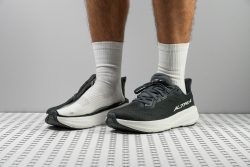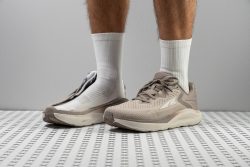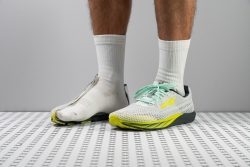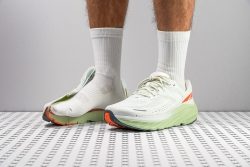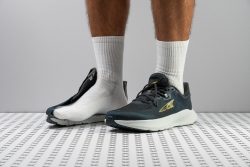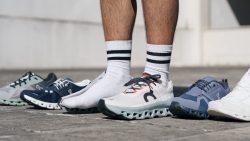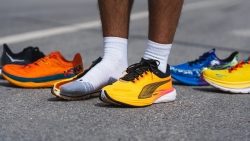7 Best Altra Running Shoes in 2025
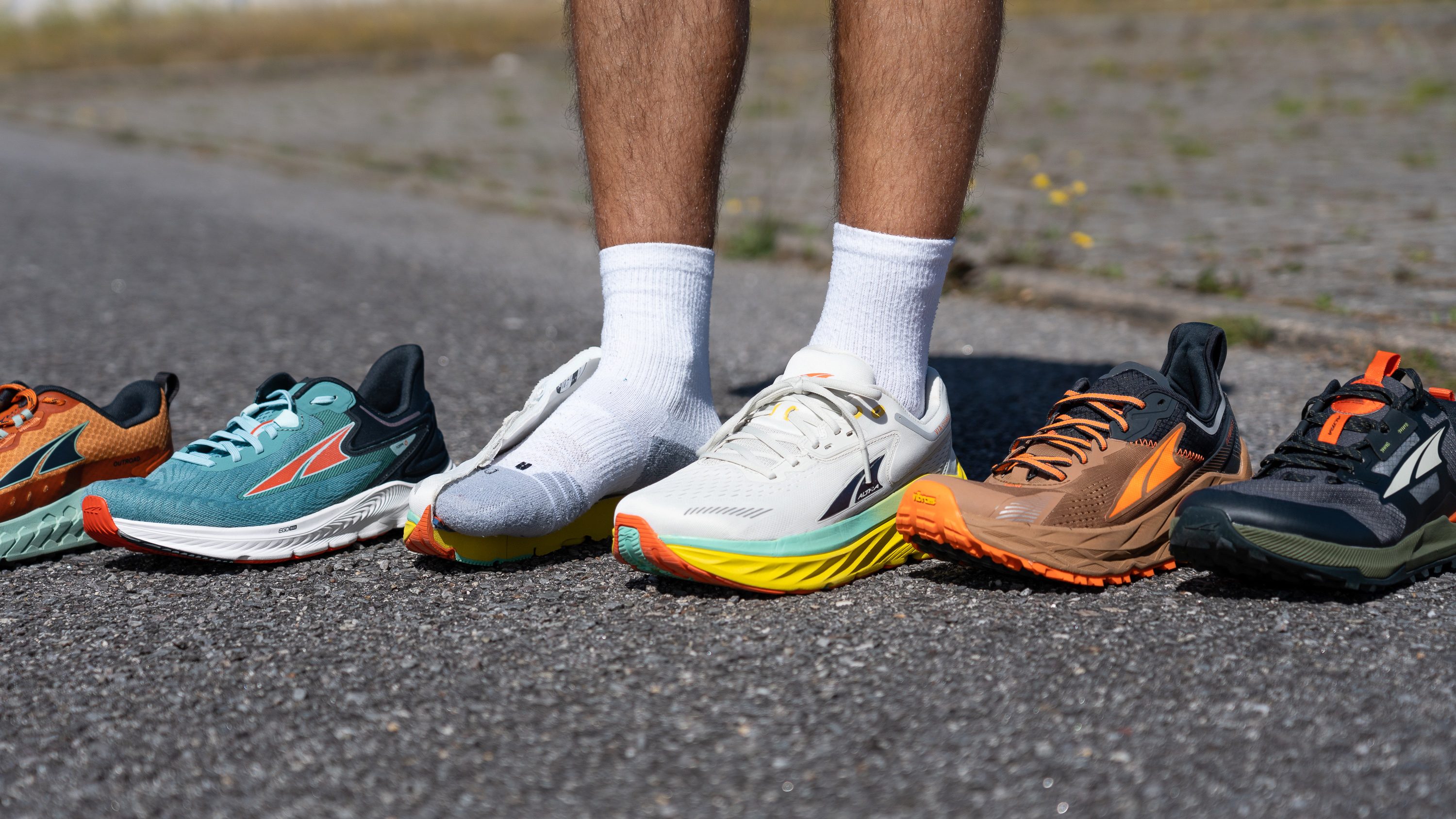
We buy shoes ourselves. We earn commissions when you buy through us, at no extra cost. Why trust us
Known for their zero-drop and barefoot design, Altra has a lot to offer, especially if you're ready for such an experience. They started releasing shoes that are not zero-drop, and we're here to welcome that!
Having tested Altra shoes on the roads, trails and in our shoe lab, we are more than sure that we can give you the Altra gold mine from different categories. Thanks to our lab data, you can find out when and how much they deviate from the zero drop.
If you're not sure about all the widths Altra offers and whether some models would be too wide for you, read our guide section. It covers much more than for true Altra enthusiasts!
How we test Altra running shoes
We don’t randomly decide on which shoe makes it to this list. We take our time testing each one of them in our independent shoe testing lab. And to really back our recommendations, we make sure to:
- Buy all the Altra shoes with our own money to prevent bias and brand loyalty
- Run multiple times in each shoe to see how well they fit, perform and how sturdy they are
- Cut each one in half to see all the details inside and measure them with our callipers and durometers. We also use a smoke machine, a tyre tread gauge, a band saw, and a Dremel to deliver 20+ data points for each Altra shoe!
Best Altra running shoes overall













































What makes it the best?
The Altra Experience Flow 2 perfectly captures our running experience in its name with its light and natural feel. Amazingly, it offers a grounded yet energetic ride, boosting comfort with its square-shaped upper. Validated by our lab results, it’s the top Altra running shoe we’ve tested.
Experience Flow 2’s midsole adapts seamlessly to each stride, while the outsole’s anatomy-based flex points align with our foot structure. True enough, it took minimal effort (10.0N) to bend the shoe to 30 degrees, compared to the average (15.2N). Additionally, each stride feels effortless with its 8.3 oz (235g) build, 11.3% lighter than average.
Besides its high adaptability, Experience Flow 2 offers a natural feel through its low 30.3/25.9 mm platform and minimal 4.4 mm drop. Despite its compact platform, it offers boundless springiness for a daily trainer, recording high energy return scores of 60.3% in the heel and a massive 68.1% in the forefoot.
The upper mimics our natural foot shape too, particularly the toebox, accommodating both wide and square feet. At 82.6 mm, it’s significantly 9.3 mm more spacious than average! We had no worries dealing with pressure points.
However, we discovered the outsole is more vulnerable to damage than the average shoe. If longevity is a priority, we recommend skipping this pair.
Pros
- Good energy return (finally!)
- Roomy, foot-shaped toebox
- Feather-light build
- Smooth, natural ride
- New plush EGO P35 foam
- Perfect bridge toward zero-drop shoes
- Comfortable for daily wear
- Flexible build
- Massive improvement over v1
Cons
- Poor outsole durability
- Not ideal for heel strikers
- Toebox height may feel slightly low
Best Altra daily running shoes
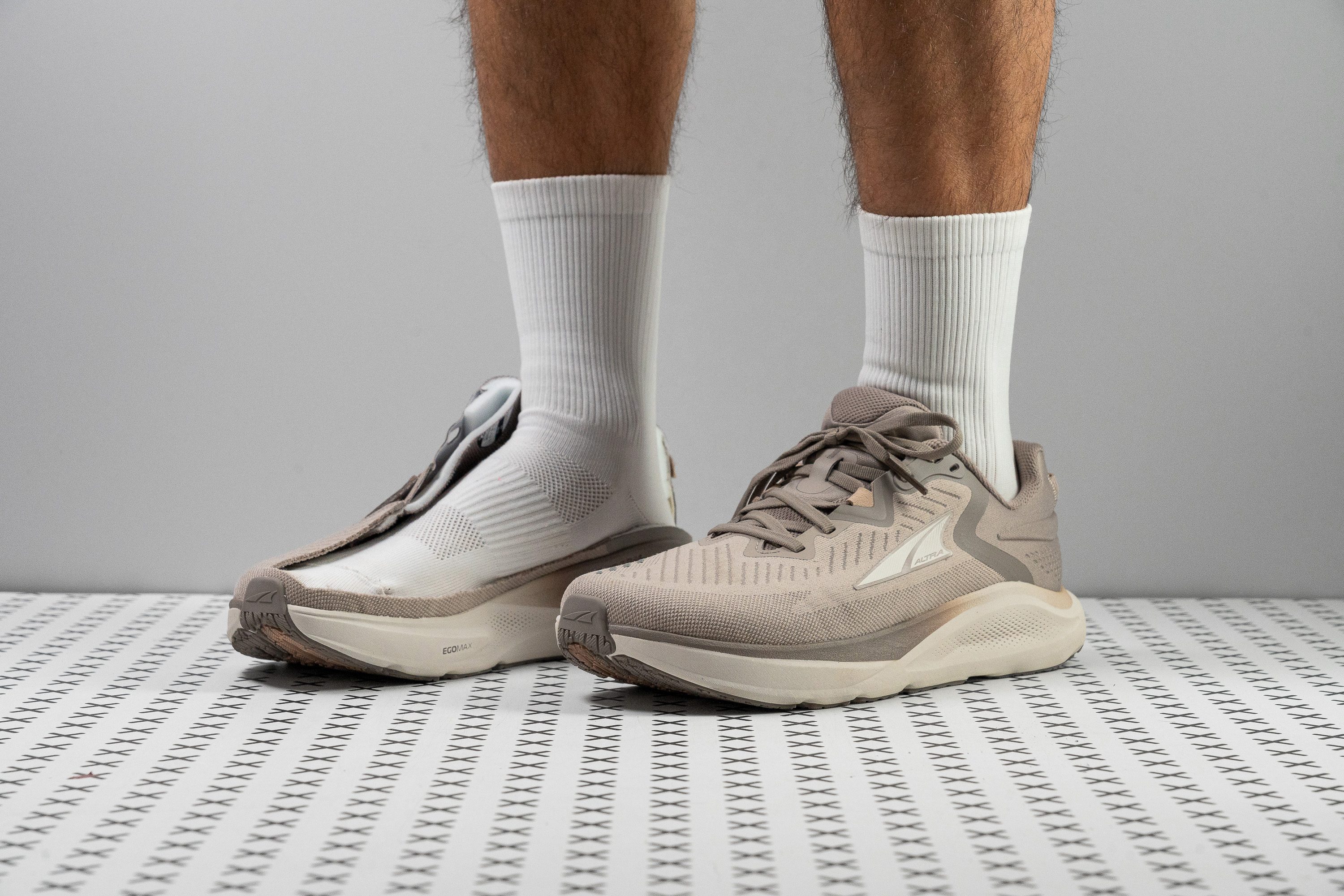












































What makes it the best?
Like most Altras, Paradigm 8 is a low drop shoe. It's accommodating even to new Altra users with its balance of comfort, stability, and durability. Our runs and lab results validate it’s the best daily trainer among Altra running shoes.
The heel-to-toe drop measures 2.1 mm, which offers a barefoot-like experience compared to the 8.6 mm average. Its 29.4/27.3 mm stack makes it ideal for mid-to-forefoot strikers with its cushioned front, generating an above-average shock absorption rating of 109 SA.
The Paradigm 8 features GuideRail sidewalls and a broad midfoot area to offer gentle guidance. These elements enhance stability since they prevent lateral wobbles.
In our Dremel test, the Paradigm 8 impresses with a high 4/5 rating in both the toebox and heel padding. Even the outsole proved to be more wear-resistant than average, with its 0.9 mm dent. These results confirm that this shoe can take the beating of daily wear.
At £160, Paradigm 8 is on the higher end of the spectrum vs. the £150 average of other Altra daily trainers. We recommend checking other options if budget is a priority.
Pros
- Very roomy toebox with excellent toe splay
- Superb stability without being intrusive
- Softer EGO MAX foam
- Improved heel padding comfort
- Outstanding overall durability
- Rare price drop from v7
- Comfortable for walking and daily wear
- Works well in winter
Cons
- Low energy return
- Not for heel strikers
- Heavier than its predecessor
- Still overpriced?
Best Altra shoes for tempo workouts
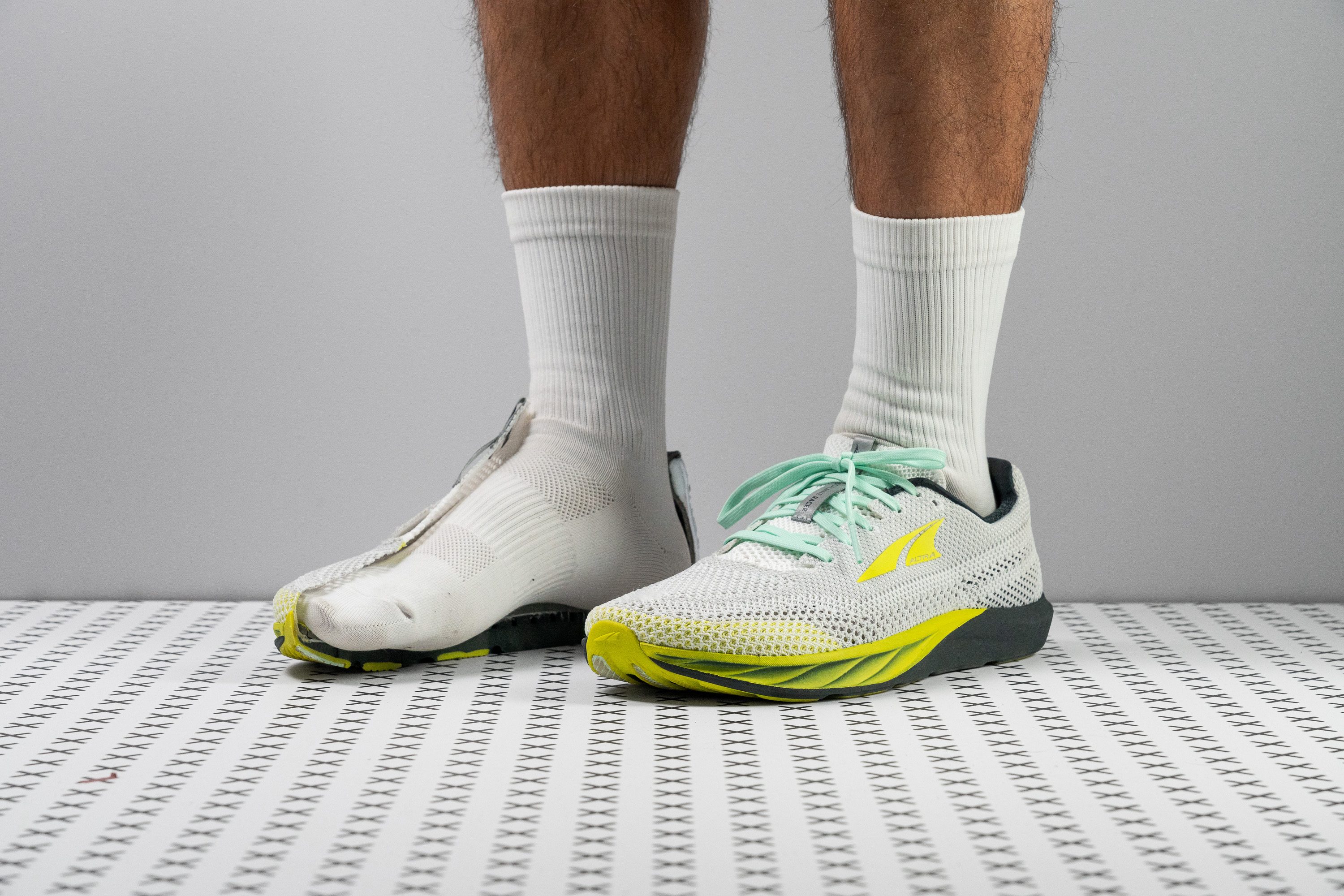
















































What makes it the best?
The Escalante Racer 2 lives up to its name, embodying speed in every stride. With its fast and fluid feel in our runs, this nimble shoe swiftly won us over, securing its spot as the top Altra tempo/race shoe. Our lab agrees it blends speed and flexibility effortlessly with its minimalist and grounded design.
Weighing a mere 7.9 oz (224g), the Escalante Racer 2 seamlessly integrates with our stride, offering a featherweight feel on the pavement. Its sleek midsole amplifies ground feel and manoeuvrability, elevating our agility.
Embracing a low drop and minimal cushioning, this speedster trains our leg muscles to do the work. With a stack height of 22.5/21.4 mm, it gives enhanced surface sensitivity. The resulting 1.1 mm drop is hardly noticeable, fully embodying Altra’s zero-drop trademark.
Engineered with FootPod technology in the outsole and InnerFlex technology in the foam, the shoe is intently designed to mimic our foot anatomy. Its flexibility shines through in our lab tests, boasting a remarkable 48.5% higher malleability than average and earning the lowest 1/5 score for torsional rigidity. We find it perfect for building speed without relying on overly stiff elements.
However, its minimal cushioning may lack the plush comfort needed for prolonged use and extensive mileage. Those who prefer more impact protection should look elsewhere.
Pros
- Enhanced toebox and outsole durability
- Incredible ventilation
- Grounded yet cushioned feel
- True zero-drop experience
- Spacious, foot-shaped toebox
- Superb stability
- Highly durable knit
- Premium perforated insole
Cons
- Heavier than previous version
- Lacks heel padding durability
Best Altra race running shoes
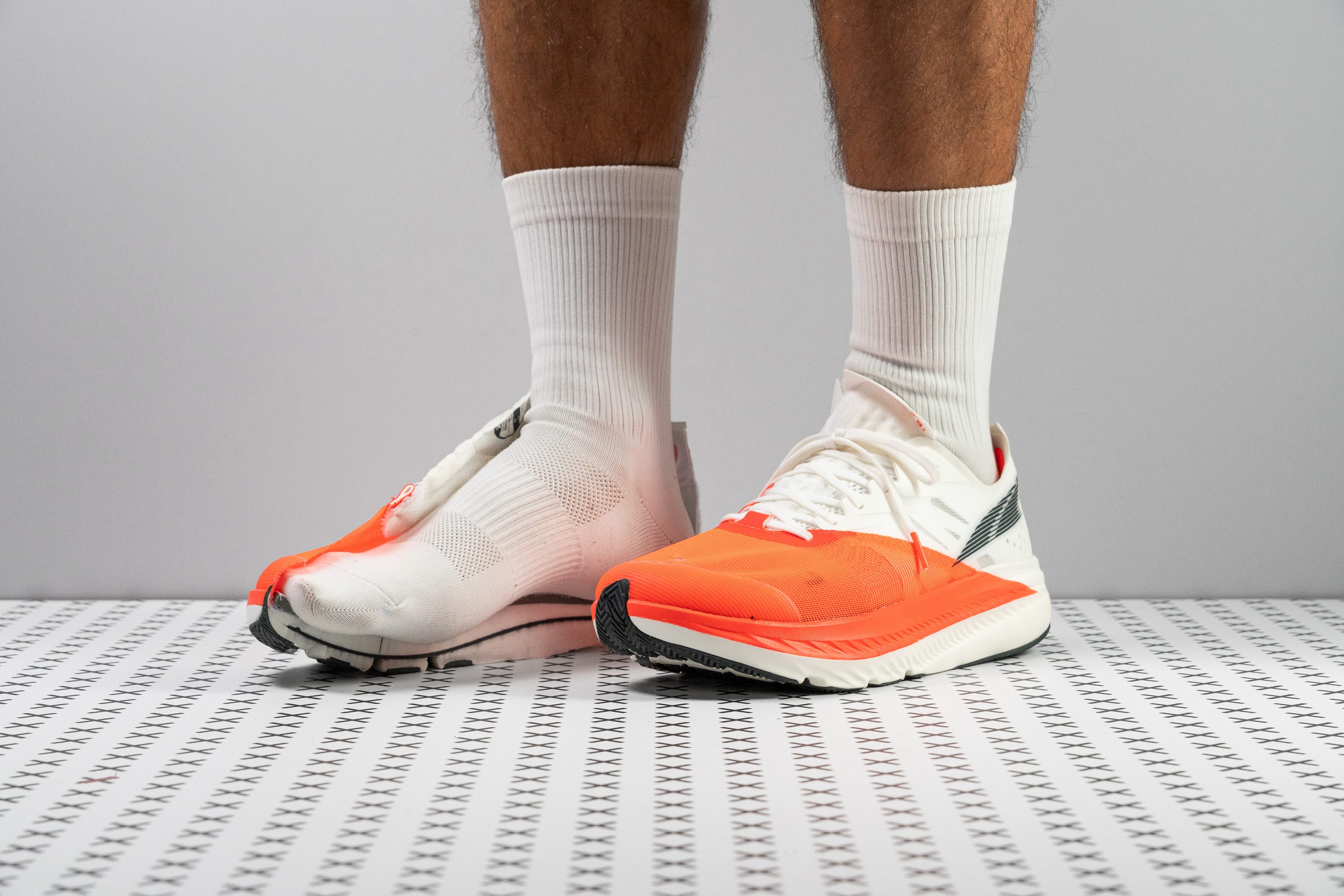

























































What makes it the best?
During our runs, the Vanish Carbon 2 captivated us with its airy and speedy nature, feeling easy on the legs as we pushed the pace. Its midsole takes centre stage, delivering energetic takeoffs and gentle landings. Among lab-tested Altra running shoes, it’s ultimately our top racer.
To assess the midsole further, we sliced it into half and found two foams with a curved, spoon-shaped plate in between. It ensures smooth turnover while remaining as flexible as other plateless shoes, boosting comfort. The top foam pressing the plate is a firm 22.8 HA for responsiveness, while the bottom layer is an ultra-plush 9.9 HA for softer impact.
Fitting its name, Vanish Carbon 2 vanished on our feet as soon as we started running. Our scales reveal a featherweight 7.4 oz (210g), 20.8% below average. It features a modest stack with a low 3.7 mm drop. While it’s not a true zero-drop shoe, the ride feels more forgiving for racing.
Enhancing the effortless sensation is the extremely airy upper. In our lab test, the smoke vanished almost instantly, earning an incredible 5/5 score. Because of its lightness, we’ll never have to complain about hotspots and sweaty feet.
However, it’s still not as insanely responsive as other supershoes. Those who want to shave off seconds in their time should look at other racers.
Pros
- Ideal for midfoot strikers
- Unique racing shoe
- Anatomically shaped toebox
- Superior breathability
- Full-length carbon plate
- Excellent for tempo training too
- Amazing tongue
- Significant upgrade from v1
Cons
- Insufficient energy return
- Not a real zero-drop shoe
- Durability concerns
- High price tag
Best Altra running shoes for long distance
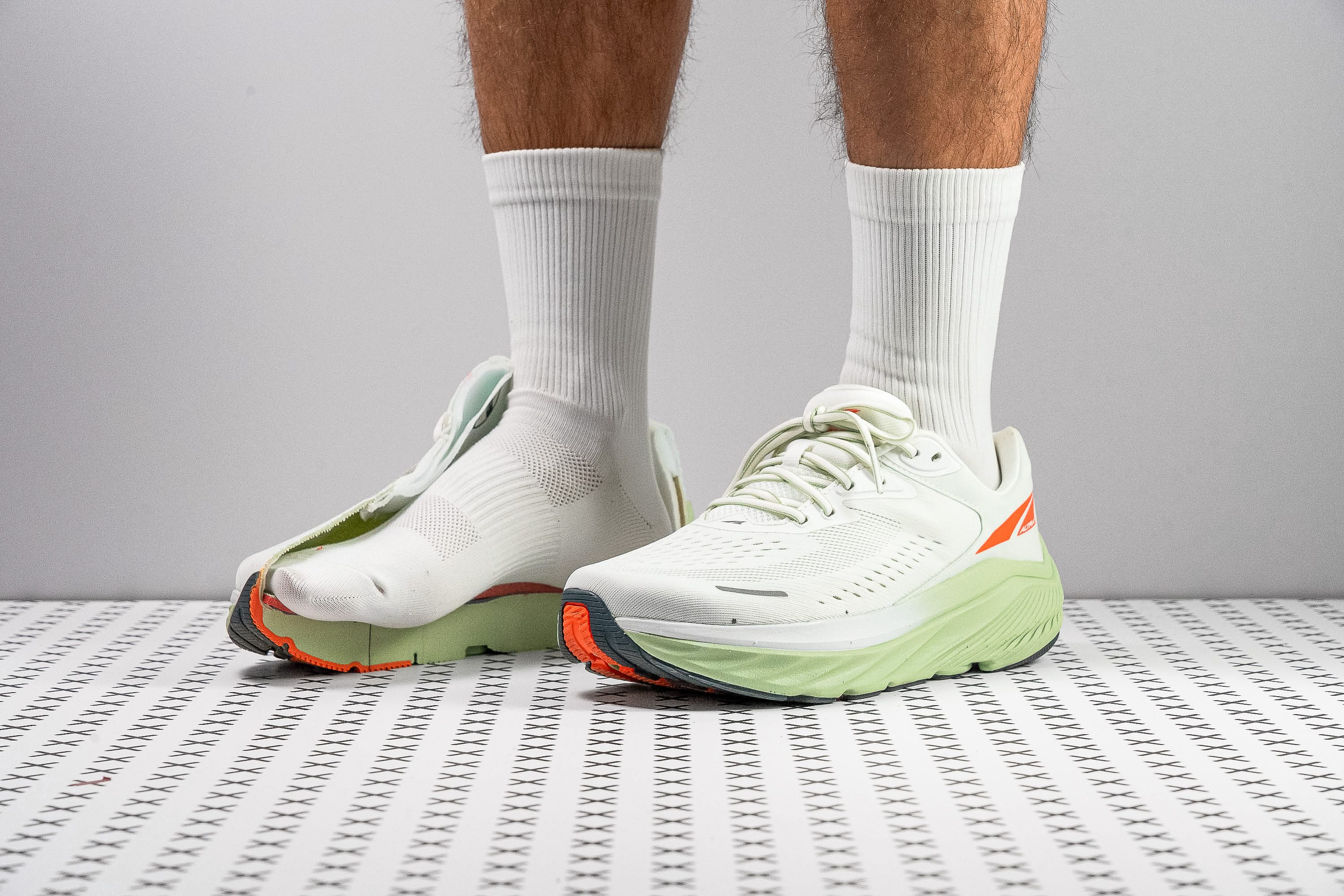



















































What makes it the best?
Amidst our extensive testing of Altra running shoes, the VIA Olympus 2 emerges as the optimal choice for long-distance endeavours. It offers unparalleled comfort and energy return for enjoyably accomplishing gruelling miles. Crafted with purpose, it mirrors our natural foot shape, enhancing comfort throughout our runs and withstanding multiple marathon distances with its robust outsole.
With the EGO MAX foam providing a cushioned and lively ride, we eagerly pursued extra miles. The plush 14.5 HA foam adds a delightful bounce, effortlessly propelling us forward. It features Altra’s hallmark zero-drop design, with our precise measurements revealing a -0.2 mm drop due to the stacked 34.8/35.0 mm heel and forefoot, the latter being one of the highest we’ve encountered in the lab.
The FootShape design mimics our foot shape so that it’s comfortable for most runners. With a generous 104.4 mm toebox tapering to 91.1 mm at the big toe, it gives room for our feet to swell during prolonged runs. Even the outsole, featuring FootPod technology, aligns with our foot anatomy to flow with our movements. While its 73.3 HC rubber measures below average, it proves its resilience by showing 33.3% less wear than average in our Dremel test.
However, a red flag is its lack of ventilation, potentially leading to discomfort such as blisters and hotspots. We recommend using this pair during the cooler seasons.
Pros
- Incredibly roomy toebox
- Authentic zero-drop design
- Extremely cushy and soft midsole
- Superb all-around durability
- Cosy upper
- Remarkably stable
- Ideal for long runs
Cons
- Limited ventilation
- Tongue not gusseted
- Still a bit heavy
Altra running shoes with the best stability
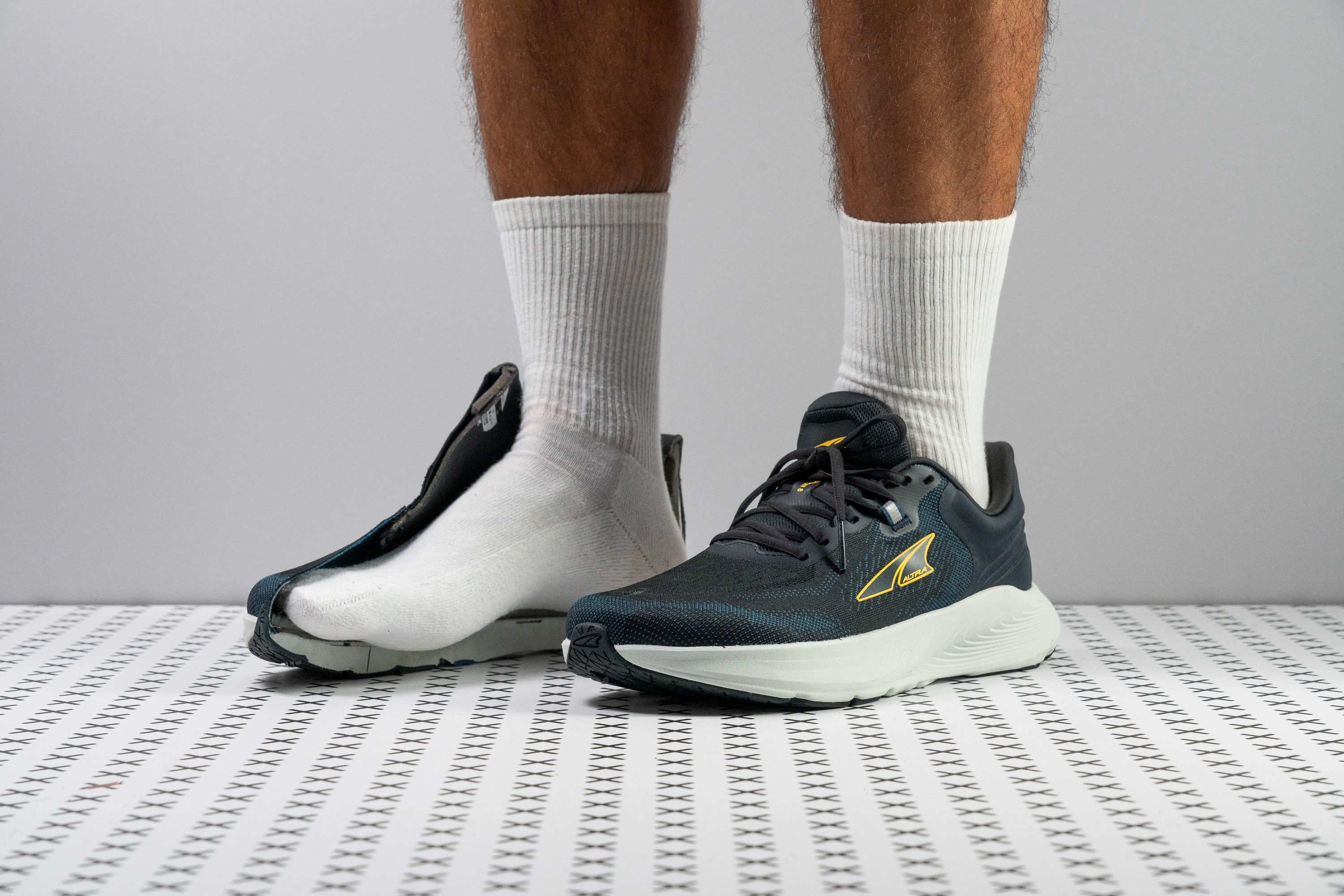















































What makes it the best?
Our intensive lab tests and run sessions reveal Altra’s best stability shoe—Provision 8. It delivers subtle support that doesn’t interfere with our strides, yet we know it’s there when we need it. This trainer feels light and low, with extra features that enhance stability, such as a balanced ride and the GuideRails technology.
There is a feeling of surefootedness throughout our runs since we have maximum surface sensitivity due to Provision 8’s grounded platform and low-drop convention. Our lab tests confirmed our sensations, revealing the 26.0/25.8 mm stack is below average while the heel drop is an almost flat 0.2 mm.
An added stability boost is the GuideRails, which are tall sidewalls that prevent our feet from collapsing in. To counter the rigidity, Provision 8 adds some flexibility in terms of longitudinal movement. Our bend test confirms it needs 21.2% less force than average to flex to our desired angle. On foot, it feels highly comfortable for daily walks and other activities.
Surprisingly, the shoe feels light as a mid-stability trainer. Compared to the 10.4 oz (296g) average of supportive shoes, Provision 8 is only 9.6 oz (273g).
Some runners may find the cushion too firm for long runs. We recommend exploring other options if comfort is a priority.
Pros
- Authentic zero-drop design
- Exceptional stability at all paces
- Anatomically shaped toebox
- Competitive pricing
- Durable, flexible outsole
- Versatile for daily wear
- Great for daily mileage
Cons
- Heel padding durability
- Weight increase from v7
- Needs more energy return
Altra running shoes for trail






















































What makes it the best?
In our outdoor explorations with the Lone Peak 9, we felt very secure as we could easily manoeuvre unpredictable terrain with its grippy, balanced, and grounded ride. Our lab results confirm its manoeuvrability and awesome surface feedback, shining as the ultimate trail shoe among Altra running shoes.
The shoe's 3.8 mm lugs provide excellent grip on wet and dry surfaces during our tests. They are strategically patterned and shaped to enhance control during ascents and descents. The LP9+ version features the world-class Vibram outsole, securing our strides no matter how slippery the trails get.
We had a good sense of the ground in this shoe. Its 23.3/23.3 mm cushion remains low profile to enhance sensitivity and has a balanced 23.6 HA composition to protect us from rocks and debris underfoot. In true Altra fashion, it features a real zero drop, which boosts a natural feel.
Its wide toebox and non-tapered silhouette also enhance the barefoot sensation, notably its massive 85.3 mm big toe area.
However, we cannot recommend this pair for long-distance running since it may feel under-cushioned and too harsh on the legs. Those tackling multi-hour runs should find a more supportive pair.
Pros
- True zero-drop geometry
- Extra-roomy, foot-shaped toebox
- Vibram option finally available
- Improved forefoot stability
- Flat-profile, natural ride
- Secure lacing system
- Still a low-stack shoe!
- Standard and wide versions
- Good durability
Cons
- Feels really heavy for its size
- Stiffer than previous versions
- Lacks airflow
- Having two outsole versions adds confusion
3 things Altras are known for
Altra running shoes are famous for:
- A foot-shaped design which means there’s a roomy toebox for your toes to splay naturally
- This design promotes a natural feel while running with no interference with the natural biomechanics
- Zero to low heel-to-toe drop.
We will cover all of these features in great detail below.
Don’t buy Altra running shoes if…
You want or need a high heel drop and have a narrow forefoot. You won’t be able to achieve a proper lockdown and your feet might slide side to side inside the shoe.
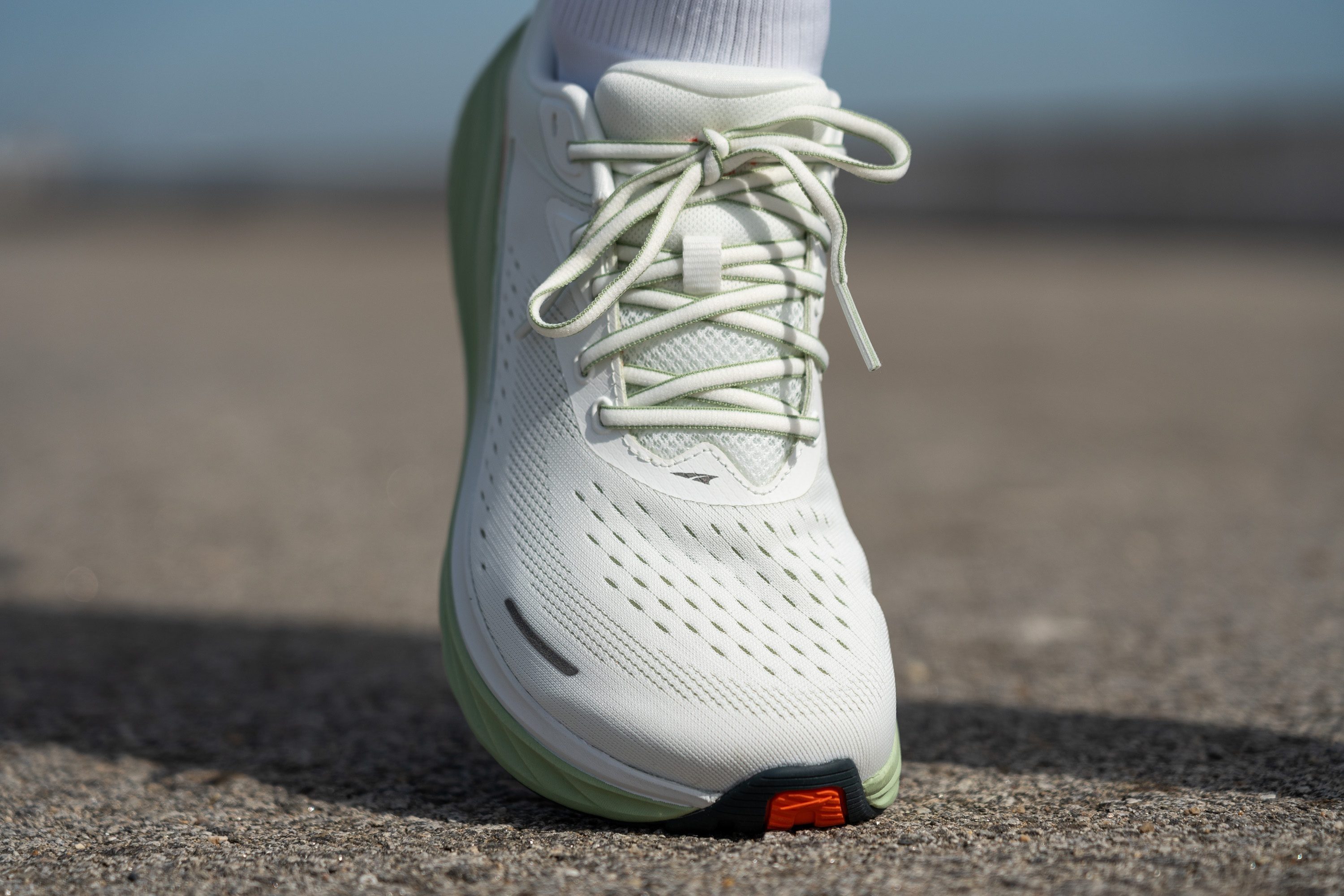
Foot-shaped design of Altra running shoes
In the world of very narrow running shoes with pointy toeboxes, Altra appeared as a refreshment. Their foot-shaped design is just that: shaped like a foot. It promotes and encourages the natural shape and form and does not try to squeeze our feet into the shoes.
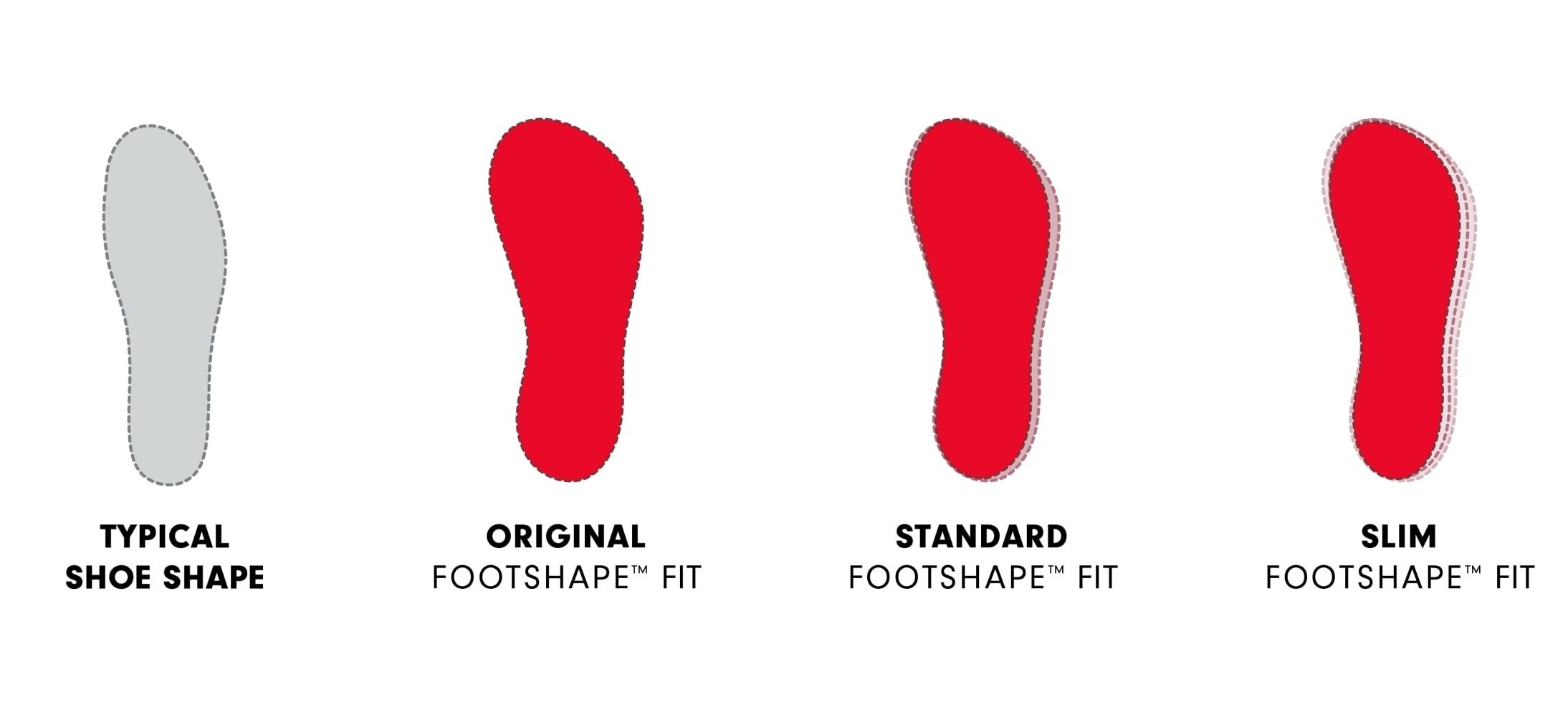
Altra has trademarked this design as FootShape™. They make shoes in 3 widths Original, Standard and Slim. As seen in the illustration below, all 3 widths follow the natural shape of the foot instead of making it narrow and pointy.
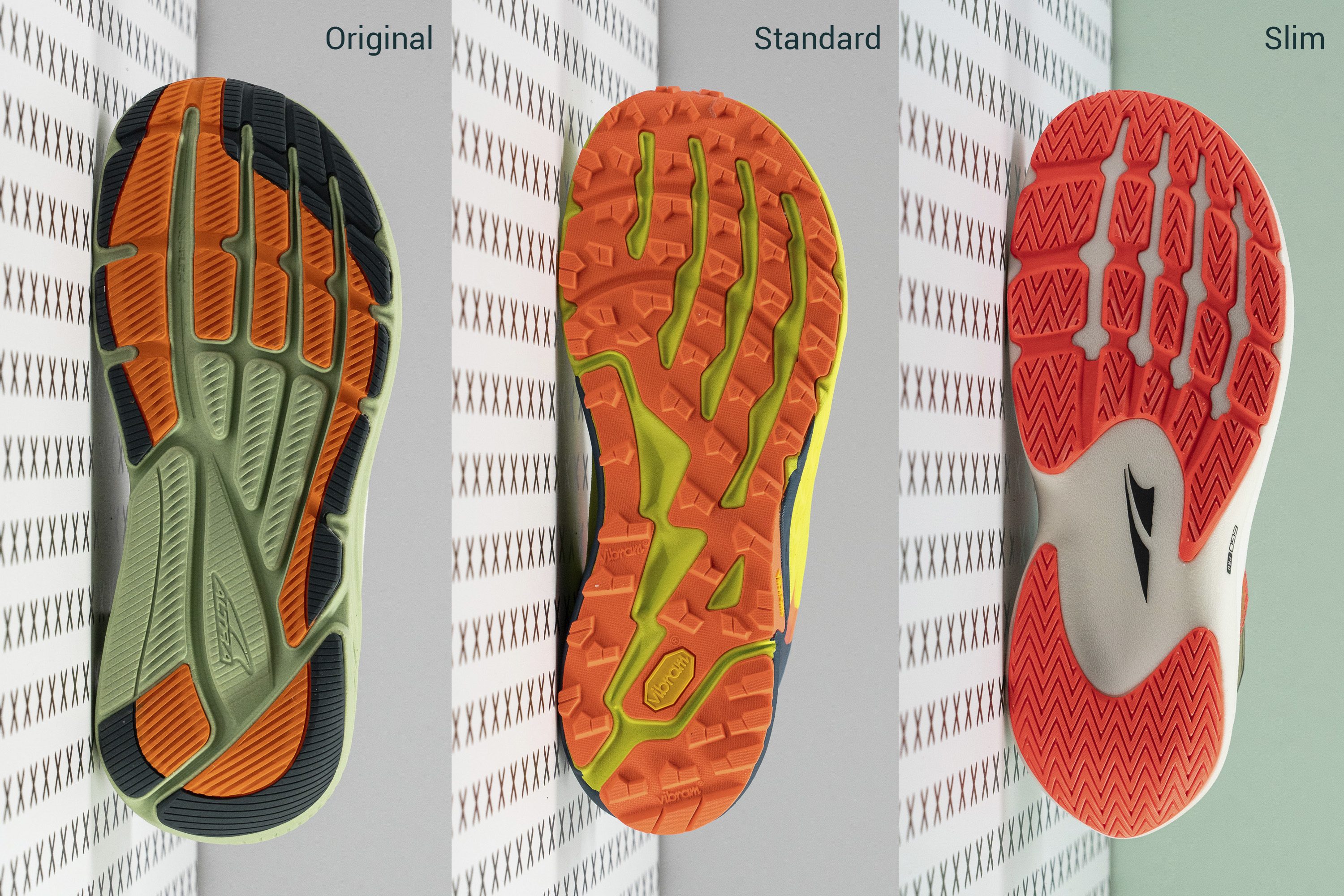
Slim is usually found in tempo and race shoes and is best for beginners who want to easily transition to more foot-shaped shoes. Standard is by far the most common shape in Altra running shoes. Original is best for people who enjoy a roomy toebox and love to be able to wiggle their toes.
Altra running shoe widths explained
Altra tags their running shoe widths with 3 shapes: Original, Standard, and Slim. Original is the widest and slim is the narrowest. Below, look at which shoe models or collections belong to each of these shapes:
- Original fit: Lone Peak, Olympus, Escalante, Escalante Racer 2
- Standard fit: King MT, Experience Flow, Experience Form, Experience Wild, AltraFWD Experience, Torin, Timp, Paradigm, Superior, Provision, Solstice, Mont Blanc, Escalante Racer 1
- Slim fit: Rivera, Outroad, Vanish
But, not knowing how wide these are actually, it’s hard to decipher which shape you’d be OK with. Is Slim narrower than average? The same, or maybe even wider? Let’s find out.
How wide are Altras actually?
To answer this, we will look at our lab measurements. We use a digital calliper to measure the width of the toebox at the big toe and the width of the shoe where it's the widest.

It’s important to take both measurements into account because the first one, where the shoe is the widest around the ball of the foot, tells us how wide the shoe is there. The second one doesn’t just tell us how wide it is at the big toe but how much the toebox tapers or how pointy it is.
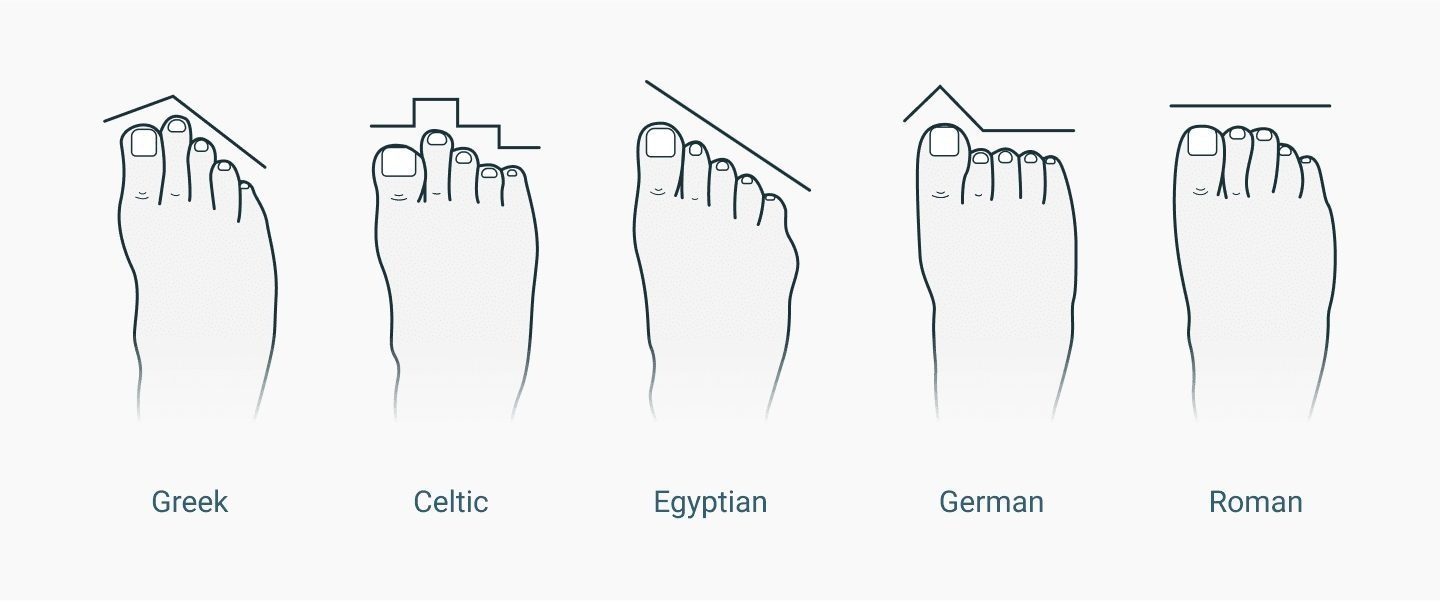
Knowing whether the toebox is pointy or square-ish helps a lot when taking into account all the different shapes of toes and toeboxes. Here’s how some Altra models that we’ve tested rank against the averages.
Our current averages for running shoes are: 98.4 mm at the widest part and 78.2 mm at the big toe.
|
Altra’s fit |
Avg width at the widest part |
Avg width at the big toe |
|
Original |
102.5 |
91.5 |
|
Standard |
99.8 |
88.9 |
|
Slim |
98.1 |
84.3 |
What we see from the numbers below is that:
- the width of the shoe where it’s the widest varies, it can be narrower and wider than the average
- the toebox width of Altra shoes at the big toe is always wider than the average of all other running shoes. This is the signature shape from Altra: their toeboxes are not pointy!
- the Slim fit is the closest to the average toebox width, which makes the Standard and the Original wider than the average
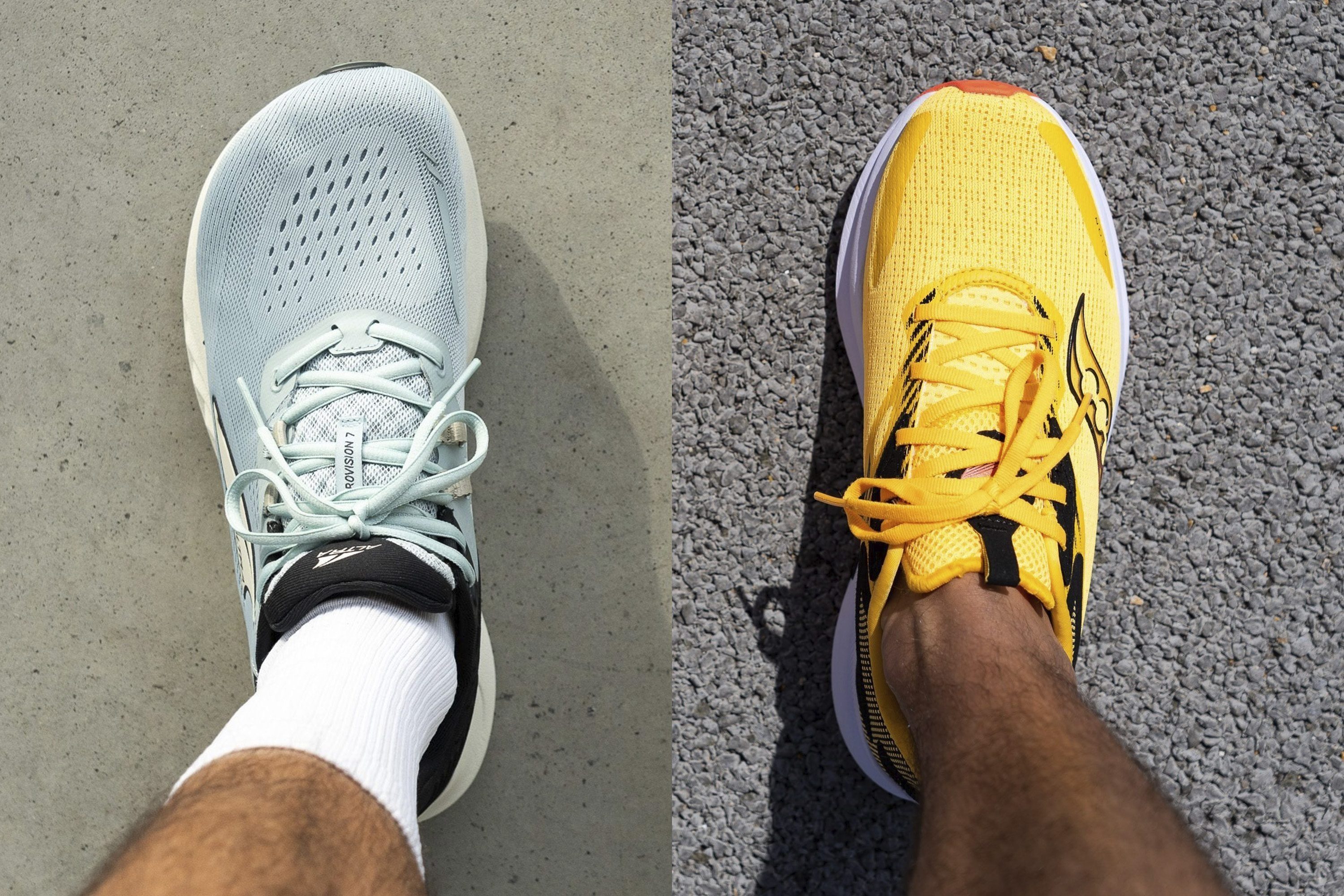
Toebox widths of ORIGINAL-shaped running shoes from Altra:
|
Shoe |
Widest width |
Compared to the overall avg for widest width |
Big toe width |
Compared to the overall avg for big-toe width |
|
97.9 |
-0.5% |
92.1 |
17.8% |
|
|
103.6 |
5.3% |
90.8 |
16.1% |
|
|
104.2 |
5.9% |
92 |
17.6% |
|
|
104.4 |
6.1% |
91.1 |
16.5% |
Toebox widths of STANDARD-shaped running shoes from Altra:
|
Shoe |
Widest width |
Compared to the overall avg for widest width |
Big toe width |
Compared to the overall avg for big-toe width |
|
101 |
2.6% |
87.6 |
12.0% |
|
|
101.9 |
3.6% |
92.5 |
18.3% |
|
|
97.6 |
-0.8% |
86.3 |
10.4% |
|
|
100.4 |
2.0% |
89.5 |
14.5% |
|
|
99.1 |
0.7% |
86.7 |
10.9% |
|
|
100.1 |
1.7% |
90.1 |
15.2% |
|
|
103.3 |
5.0% |
90.4 |
15.6% |
|
|
95.4 |
-3.0% |
88.3 |
12.9% |
Toebox widths of SLIM-shaped running shoes from Altra:
|
Shoe |
Widest width |
Compared to the overall avg for widest width |
Big toe width |
Compared to the overall avg for big-toe width |
|
96.5 |
-1.9% |
85.7 |
9.6% |
|
|
100.5 |
2.1% |
87.7 |
12.1% |
|
|
99.4 |
1.0% |
82.8 |
5.9% |
|
|
99.1 |
0.7% |
79.5 |
1.7% |
|
|
97.1 |
-1.3% |
84.2 |
7.7% |
|
|
96.2 |
-2.2% |
86.1 |
10.1% |
Why you should be cautious about Altra’s heel drop
Heel-to-toe drop tells us how high the heel sits compared to the forefoot. It goes from 0mm to even 15mm. Although many runners disregard the heel drop, it’s important to pay attention to it because sudden changes in heel drop, especially big ones, can lead to an injury.
General guidelines say that the zero drop utilises the foot muscles the most, then as you go higher with the drop, you also activate higher leg muscles more. A low drop (less than 5mm) will focus on the Achilles and calves and a high drop (above 10mm) on the hip muscles.
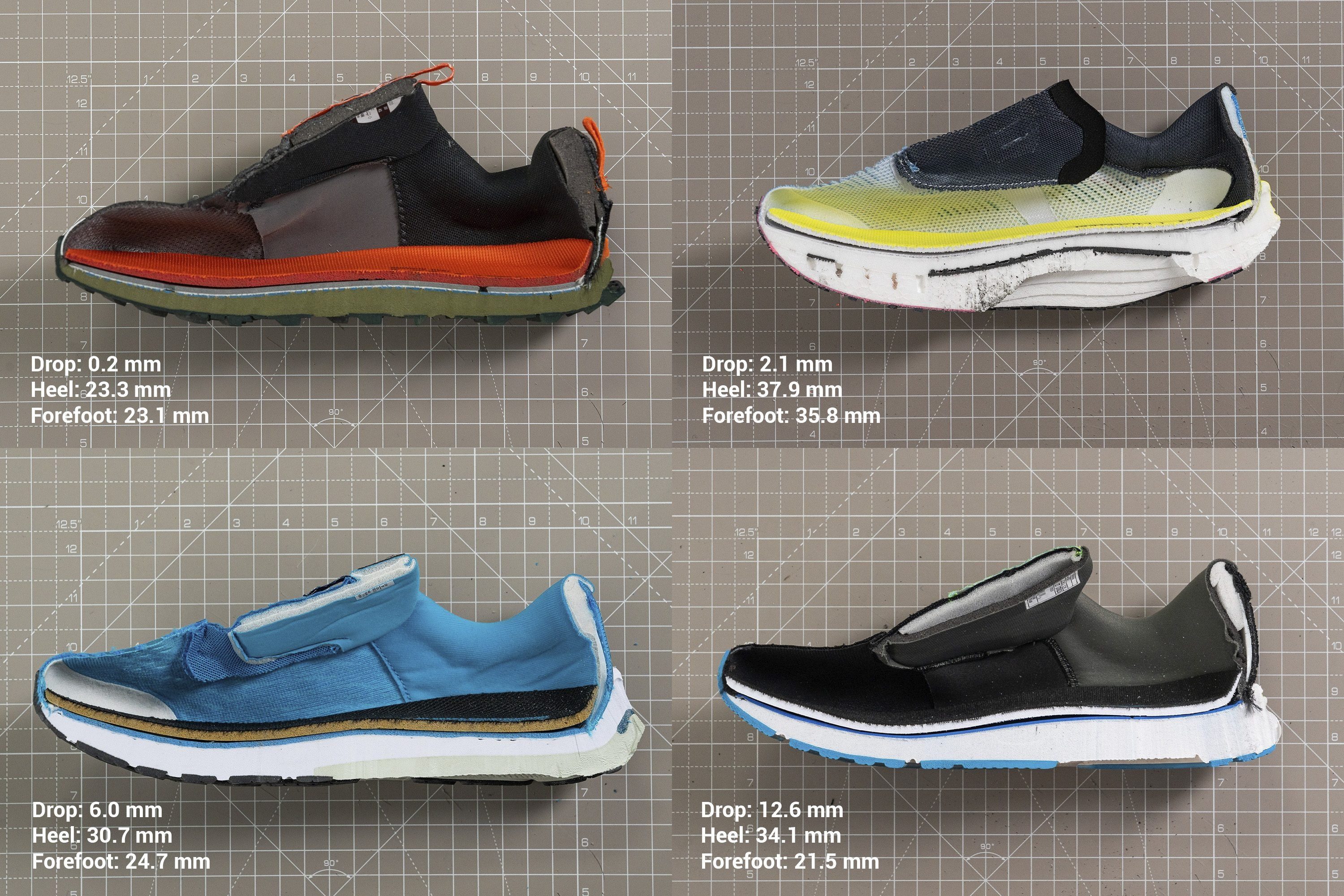
If you previously had an injury or are currently dealing with one, it’s important not to choose a heel drop that could make it worse. If you’re running in 10mm drop shoes and are dealing with Achilles pain, you should not go for 0mm shoes or even less than 4mm. At least not all of a sudden. Transitions are possible, but they should always be gradual.
How to transition to zero drop or low drop
Fun fact: if you’ve been running in high-drop shoes, the first time you enter the zero-drop shoes, they might feel like it’s a negative drop! Like your heel is lower than the forefoot. That’s normal and you will get used to it.

There’s no standard protocol because the amount of time needed to safely transition to a zero-drop shoe or a low-drop shoe depends on many factors: your current and previous state regarding injuries, your foot strike, pronation, overall foot and leg strength, and so on. You should, however, take it slowly, and if there’s even a hint of strain or discomfort, stop immediately and switch to your old shoes that do not cause discomfort.
For context, you should know that some runners need a full year to be able to run 10km in zero-drop running shoes. Others can do it in a few months.
Runners who could transition to low drop or zero drop more easily are those who: are already running in mid-drop (5-8mm) running shoes, who don’t have lower-leg weaknesses, who are forefoot strikers and have neutral pronation or supination. Of course, this does not mean that heel strikers and overpronators can’t run in zero-drop shoes, but it means that they might need a bit more time for a safe transition.
| The most comprehensive source for all things related to heel drop is found in our Ultimate guide on heel to toe drop. We highly recommend reading it! |
Is it really a zero drop?
Altra started as a zero-drop brand. All the shoes were said to have a 0 mm heel-to-toe drop. But then, after many years, the Experience line happened (featuring the shoes Experience Flow, Experience Form and Experience Wild) and we got shoes with a 4mm heel drop.
In our shoe lab, we measure the heel stack height and forefoot stack height and we do it according to the guidelines from WorldAthletics. This means that we first cut the shoes in half and then measure the heel stack height at 12% of the inner shoe length and forefoot stack height at 75% of the inner shoe length.
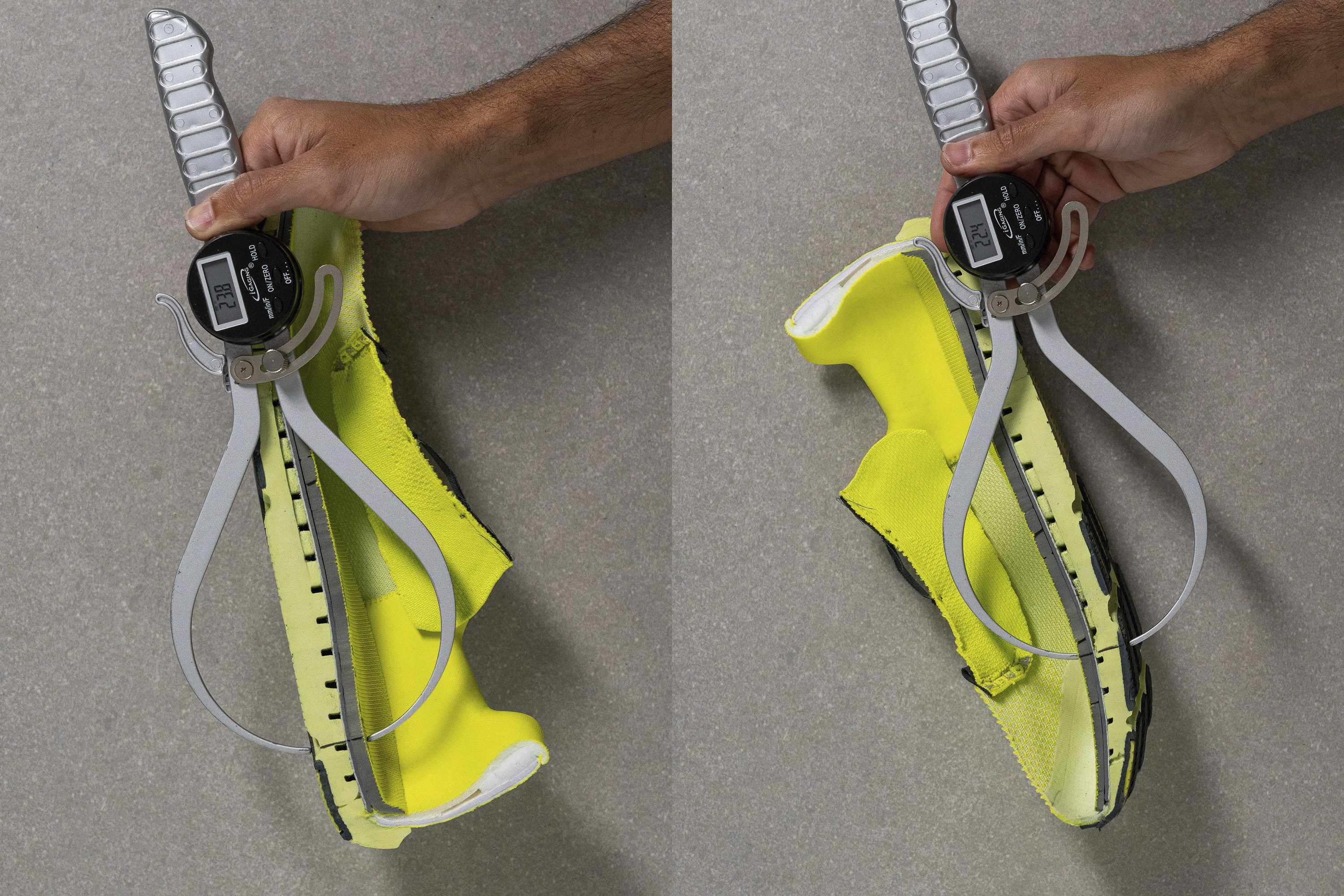
Then, we calculate the drop. (Heel stack height) - (Forefoot stack height) = Heel to toe drop. To our surprise, many shoes have a very different heel drop compared to what the brands promote! You should be aware of this and always double-check the drop.
Here are some of the biggest differences found in lab-measured heel drop vs brand-promoted heel drops in Altra running shoes:
| Shoe | Lab-measured heel drop | Brand's heel drop specs |
| Altra Vanish Carbon | 5.4 mm | 0 mm |
| Altra Provision 7 | 4.8 mm | 0 mm |
| Altra Vanish Carbon 2 | 3.7 mm | 0 mm |
| Altra VIA Olympus | 1.6 mm | 0 mm |
| Altra Lone Peak 8 | 1.4 mm | 0 mm |
Shock absorption and energy return of Altra running shoes
Shock absorption is the midsole's capability to absorb the impact forces at the landing (when a runner squishes the midsole with their feet). The higher the shock absorption, the better, because it means that runners' legs have to deal with less stress.
Energy return, on the other hand, tells us how effective the midsole is at bouncing back after being squished. This is what runners usually call responsiveness and is super important, especially on long runs or at fast paces (e.g., when racing).
Given that Altra running shoes have been focused on that natural feeling while running, we can't expect them to shine at shock absorption and energy return in general. Even though they released some high-stacked models and even 4mm-drop models, the majority of their range has been less stacked and zero drop. So, let's look at the numbers.
Based on the numbers in this sheet, we can see that Altra running shoes don't get close to the average shock absorption of all running shoes we've tested so far (sits at 128 SA at the moment of writing this guide), and not to mention above it. This is the price to pay when focusing on other things, as mentioned above.
At the moment, the average energy return of all running shoes we've tested in the lab sits at 58%. Some Altra running shoes score above it, but barely.
Altra running shoes for overpronation
Just because Altra makes running shoes that promote natural gait and feel on the run does not mean they shy away from the regular technologies we’d expect in running shoes. They don’t make only neutral running shoes but also stability ones.
Usually, medial posts and side walls are used to prevent (to some degree) the excessive inward rolling of the ankle that happens to the overpronators.
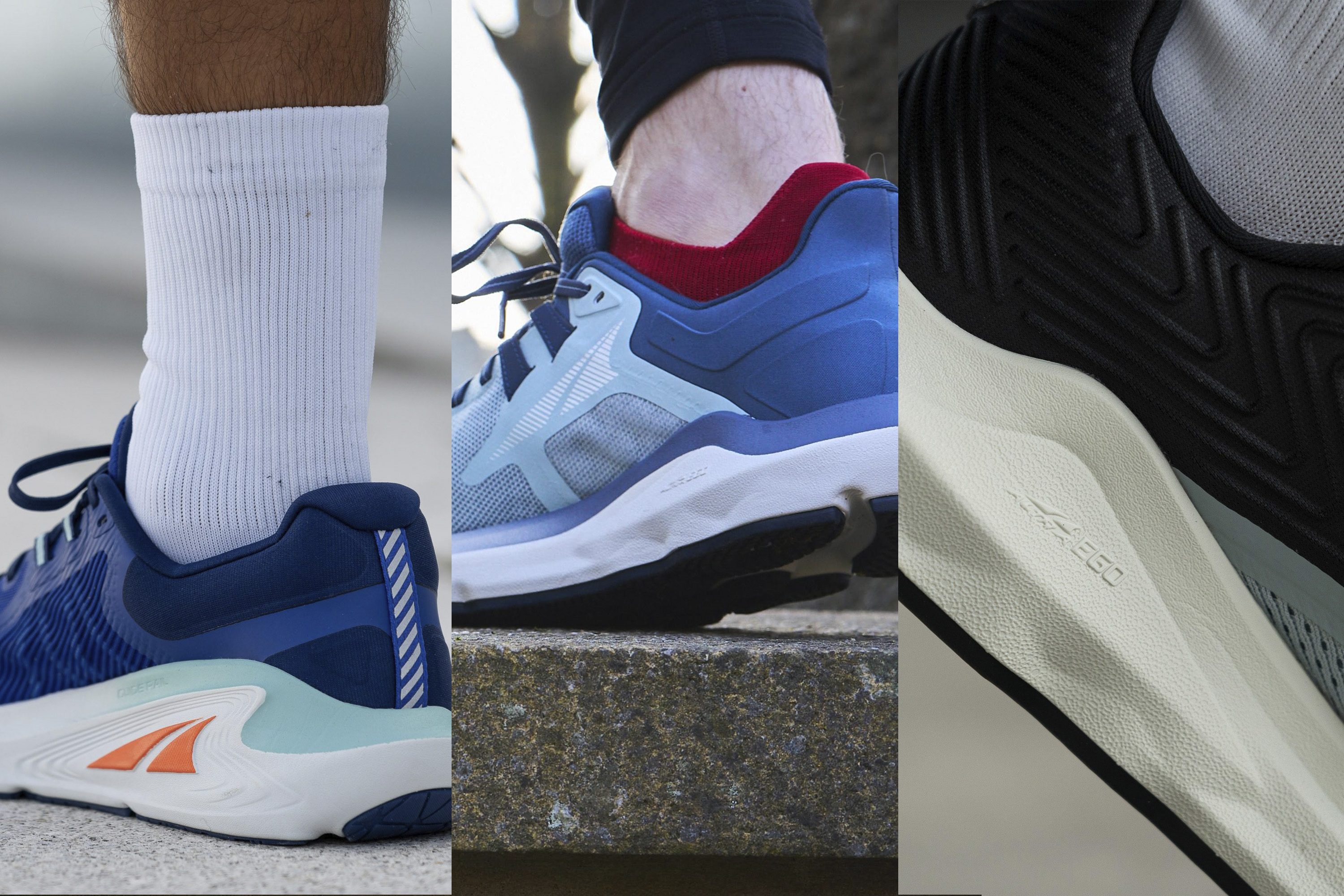
Altra actually trademarked the Guide Rail, which is located on the medial side and offers guidance when needed.
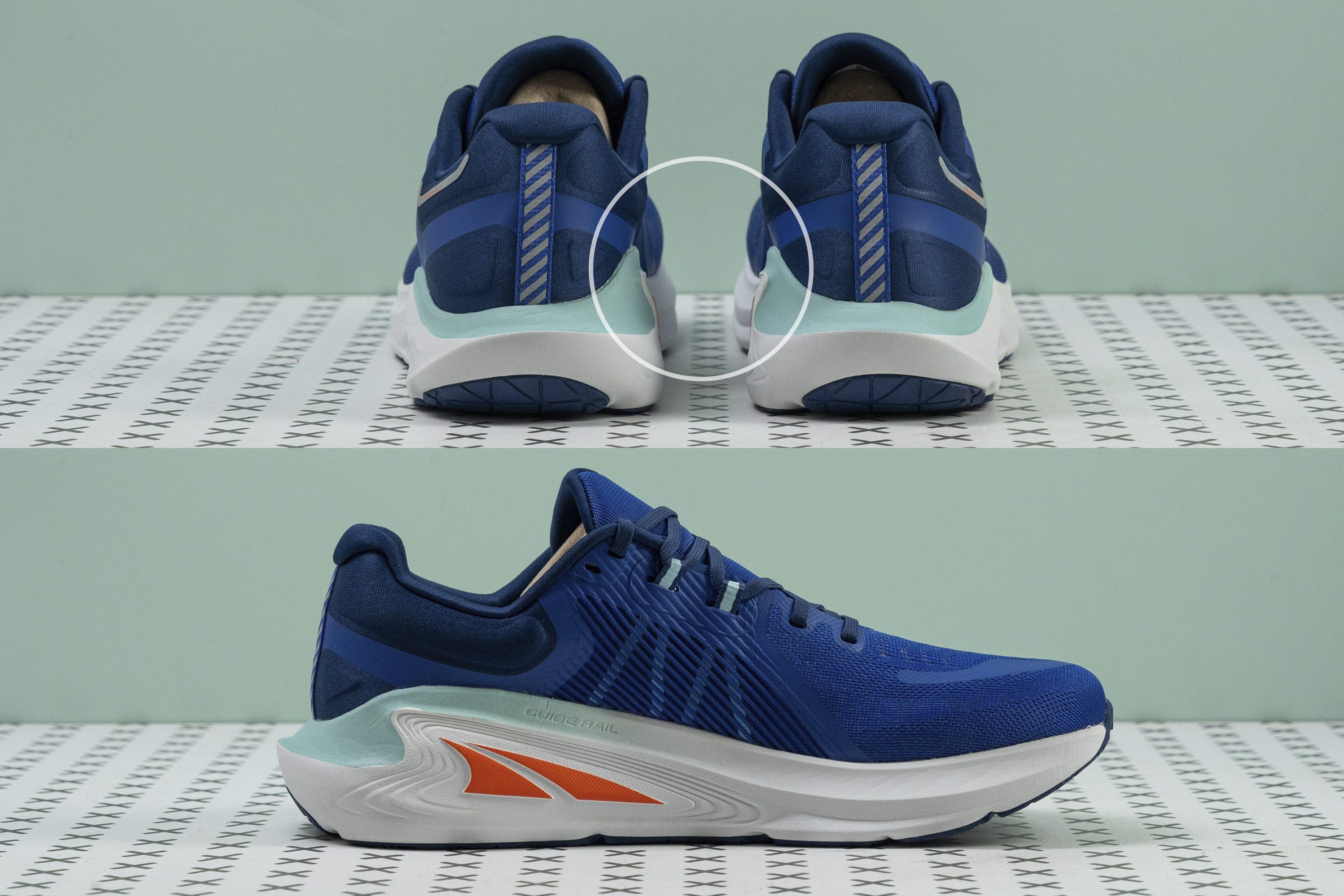
Carbon-plated Altra running shoes
Many people think that foot-shaped footwear is boring and minimalist or barefoot and Altra is here to prove them wrong. Just because the shoes are zero-drop or low-drop, does not mean they can’t utilise a carbon plate.
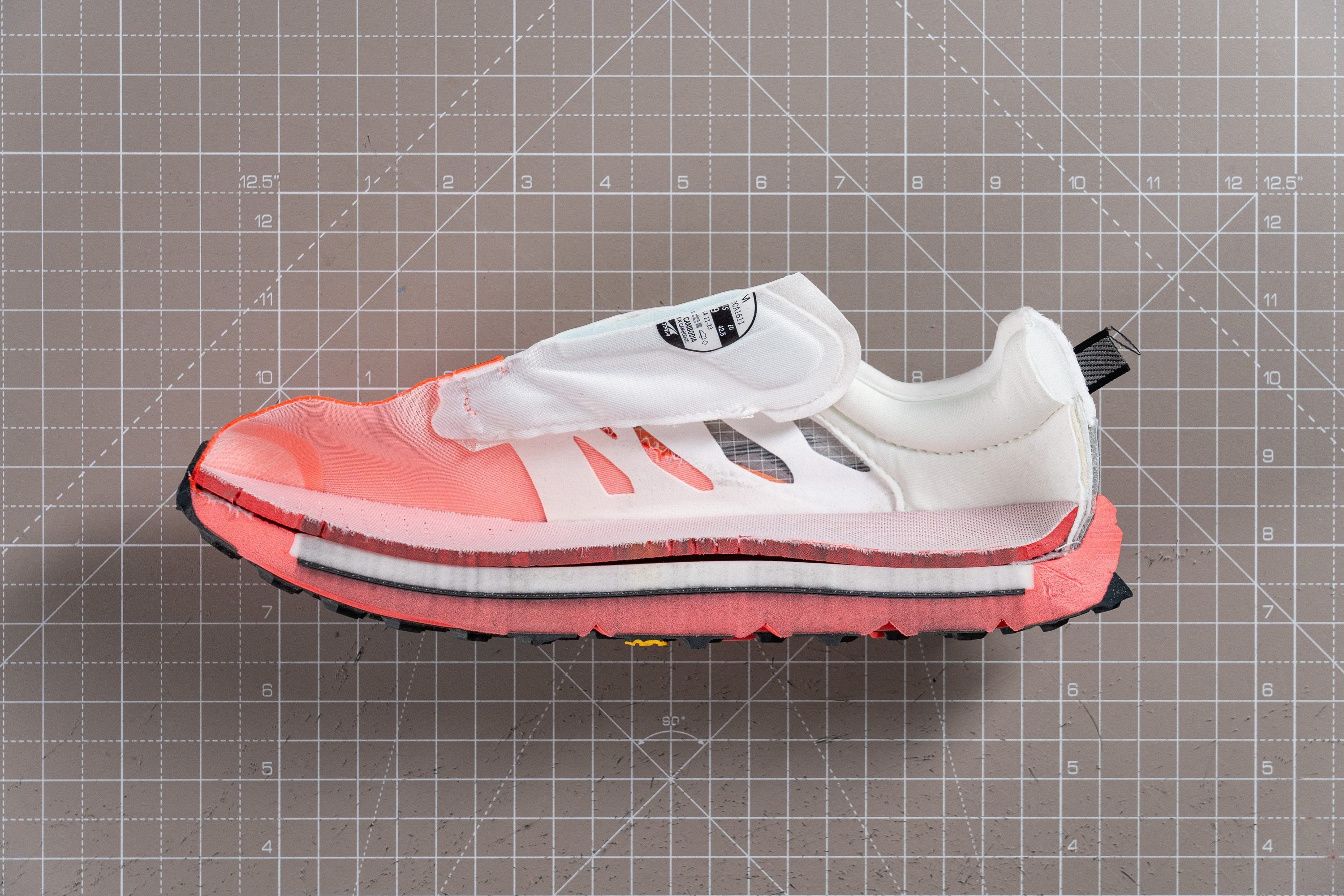
Turns out, you can enjoy the carbon-fibre plate in a zero/low drop shoe after all.
Traction in Altra running shoes
To test the traction, we honour the SATRA TM144 testing methodology. This means that we use a 7-degree wedge to angle the shoe and a force of 500N to press it against the wet surface (so called critical conditions). The result is a dynamic coefficient of friction and the higher it is, the better the traction.
This coefficient of friction becomes significantly more important if you tend to run in wet weather (on wet concrete/asphalt, for example). In that case, we recommend looking for a CoF of at least 0.45.

